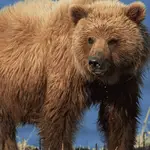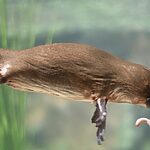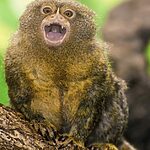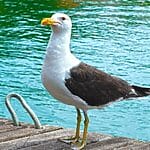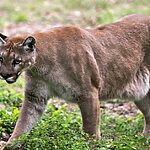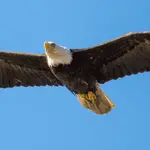Africa’s iconic wildlife faces grave threats, with many species on the brink of extinction. From critically endangered mammals like black rhinos and gorillas, to endangered birds and amphibians found nowhere else on Earth, Africa’s biodiversity is in peril.
Habitat loss, poaching, climate change, and human-wildlife conflict are driving alarming declines. But there is hope. Dedicated conservationists are fighting to protect endangered animals through anti-poaching efforts, habitat restoration, captive breeding programs, and community engagement.
By examining the challenges and successes of conservation in Africa, we can better understand what it will take to save these incredible creatures for future generations.
Quick Answer: Critically endangered African animals include black rhinos, gorillas, riverine rabbits, and various birds. Endangered species include elephants, addax, lemurs, and bats. Vulnerable/near-threatened species include wild dogs, giraffes, cheetahs, penguins, and zebras.
Key Takeaways:
- Africa’s critically endangered species, including black rhinos, gorillas, and various birds, face threats like poaching, habitat loss, and climate change, requiring urgent conservation efforts.
- Endangered species in Africa, such as elephants, lemurs, and bats, are threatened by factors like habitat fragmentation, hunting, and human-wildlife conflict.
- Successful conservation initiatives in Africa involve protecting habitats, engaging local communities, and promoting international cooperation to combat poaching and support wildlife conservation.
List of Endangered Animals in Africa
Africa is home to an incredible diversity of wildlife, but many species are facing the threat of extinction due to various factors such as habitat loss, poaching, and climate change. Here, we will explore some of the most endangered animals in Africa, categorized by their conservation status.
Critically Endangered Species
Critically endangered species are those that are facing an extremely high risk of extinction in the wild. These animals have seen a drastic decline in their populations and require urgent conservation efforts to prevent their disappearance.
Black Rhinos
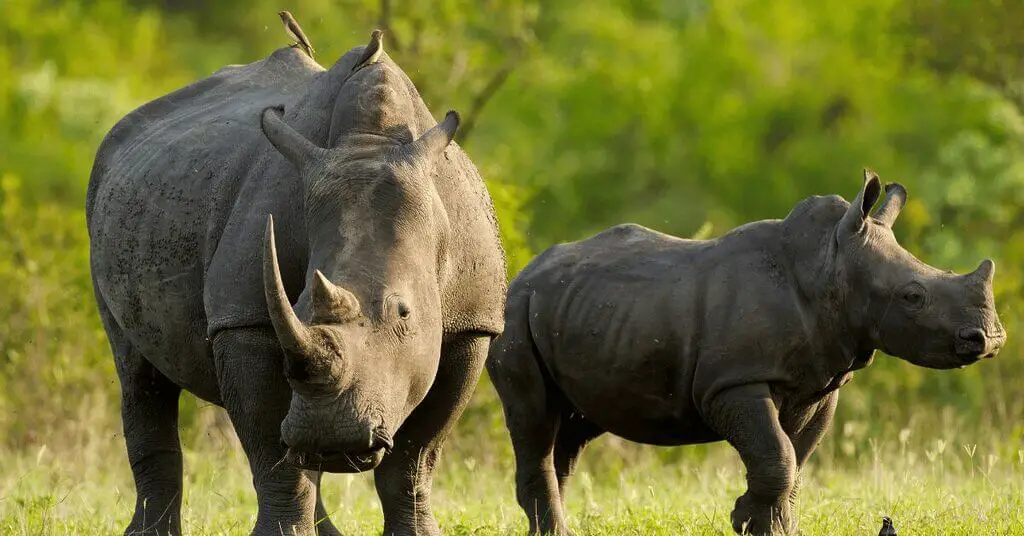
Population and Habitat
Black rhinos once roamed across much of sub-Saharan Africa, but their numbers have plummeted due to poaching and habitat loss. Today, there are only around 5,500 black rhinos left in the wild, spread across various countries such as South Africa, Namibia, and Kenya. They prefer grasslands and savannas, but their habitat has been severely fragmented, with some subspecies now extinct.
Threats and Conservation Efforts
The primary threat to black rhinos is poaching for their horns, which are highly valued in traditional medicine and as status symbols. Habitat fragmentation and human-wildlife conflict also pose significant challenges. Conservation efforts include anti-poaching patrols, habitat restoration, and community-based conservation initiatives. Organizations like the World Wildlife Fund (WWF) and Save the Rhino International are working tirelessly to protect these magnificent creatures.
Gorillas
Types of Gorillas in Africa
There are two species of gorillas found in Africa: the western gorilla and the eastern gorilla. The western gorilla is further divided into two subspecies: the western lowland gorilla and the Cross River gorilla. The eastern gorilla also has two subspecies: the mountain gorilla and the eastern lowland gorilla.
Each type has distinct physical characteristics, social structures, and distributions. The mountain gorilla, for example, is found only in the mountains of Rwanda, Uganda, and the Democratic Republic of Congo, with a population of around 1,000 individuals.
Threats and Conservation Efforts
Gorillas face numerous threats, including habitat loss due to deforestation, poaching for bushmeat, and disease transmission from humans.
Conservation efforts focus on habitat protection, anti-poaching measures, and community engagement. The Dian Fossey Gorilla Fund International and the Wildlife Conservation Society are among the organizations working to conserve gorillas and their habitats.
Riverine Rabbit
Habitat and Behavior
The riverine rabbit is a unique species found only in the Karoo region of South Africa. These nocturnal rabbits depend on specific vegetation along riverbanks for food and shelter. Their habitat has been severely reduced, with only around 250 individuals remaining in the wild. The riverine rabbit’s habitat has been fragmented by agricultural expansion, with an estimated 50% of their original range lost.
Threats and Conservation Efforts
The main threats to riverine rabbits are habitat degradation due to agricultural expansion and overgrazing by livestock. Conservation efforts include habitat restoration, captive breeding programs, and awareness campaigns. The Endangered Wildlife Trust and the Riverine Rabbit Working Group are dedicated to protecting this critically endangered species.
São Tomé Grosbeak
Habitat and Behavior
The São Tomé grosbeak is a bird endemic to the island of São Tomé in the Gulf of Guinea. They inhabit the island’s forests and play a crucial role in seed dispersal. With a population estimated at only 50-250 individuals, the São Tomé grosbeak is one of the rarest birds in the world.
Threats and Conservation Efforts
The primary threats to the São Tomé grosbeak are habitat loss due to deforestation and invasive species. Conservation efforts focus on habitat protection, invasive species control, and research on their ecology and behavior. BirdLife International and the São Tomé and Príncipe government are working together to save this unique species.
White-winged Flufftail

Habitat and Behavior
The white-winged flufftail is a small, secretive bird found in Ethiopia and South Africa. They depend on wetland habitats and are known for their elusive nature, making them difficult to study. The global population is estimated at less than 250 individuals, with a highly fragmented distribution.
Threats and Conservation Efforts
White-winged flufftails are threatened by habitat loss due to wetland drainage and degradation, as well as climate change. Conservation efforts include habitat protection, research on their ecology and distribution, and community engagement. The BirdLife South Africa and the Ethiopian Wildlife and Natural History Society are among the organizations working to protect this critically endangered bird.
Madagascar Pochard
Habitat and Behavior
The Madagascar pochard is a diving duck endemic to Madagascar. They depend on freshwater lakes and are known for their unique diving abilities. With a population of only around 50 individuals, the Madagascar pochard is one of the rarest birds in the world. They are currently found in only a handful of breeding sites.
Threats and Conservation Efforts
The main threats to Madagascar pochards are habitat loss due to wetland degradation, hunting, and introduced fish species. Conservation efforts include captive breeding and reintroduction programs, habitat restoration, and community engagement. The Durrell Wildlife Conservation Trust and the Wildfowl & Wetlands Trust are among the organizations working to save this critically endangered duck.
Liben Lark
Habitat and Behavior
The Liben lark is a critically endangered bird found only in a small area of Ethiopia. They depend on grassland habitats and are known for their unique vocalizations. The current population is estimated at less than 50 individuals, with a range of only around 100 square kilometers.
Threats and Conservation Efforts
The primary threats to Liben larks are habitat loss due to agricultural expansion, overgrazing, and climate change. Conservation efforts focus on habitat protection, research on their ecology and distribution, and community engagement. The Ethiopian Wildlife and Natural History Society and BirdLife International are working to protect this critically endangered species.
Bale Mountains Tree Frog
Habitat and Behavior
The Bale Mountains tree frog is a critically endangered amphibian found only in the Bale Mountains of Ethiopia. They depend on montane forest habitats and have unique adaptations to their high-altitude environment. The population is estimated at less than 250 individuals, with a range of only around 8 square kilometers.
Threats and Conservation Efforts
The main threats to Bale Mountains tree frogs are habitat loss due to deforestation, climate change, and chytrid fungus. Conservation efforts include habitat protection, research on their ecology and distribution, and ex-situ conservation measures. The Ethiopian Wildlife Conservation Authority and the Bale Mountains National Park are working to protect this critically endangered frog.
Endangered Species
Endangered species are those that are facing a very high risk of extinction in the wild. While their populations are not as critically low as those of critically endangered species, they still require significant conservation efforts to ensure their survival.
Elephants
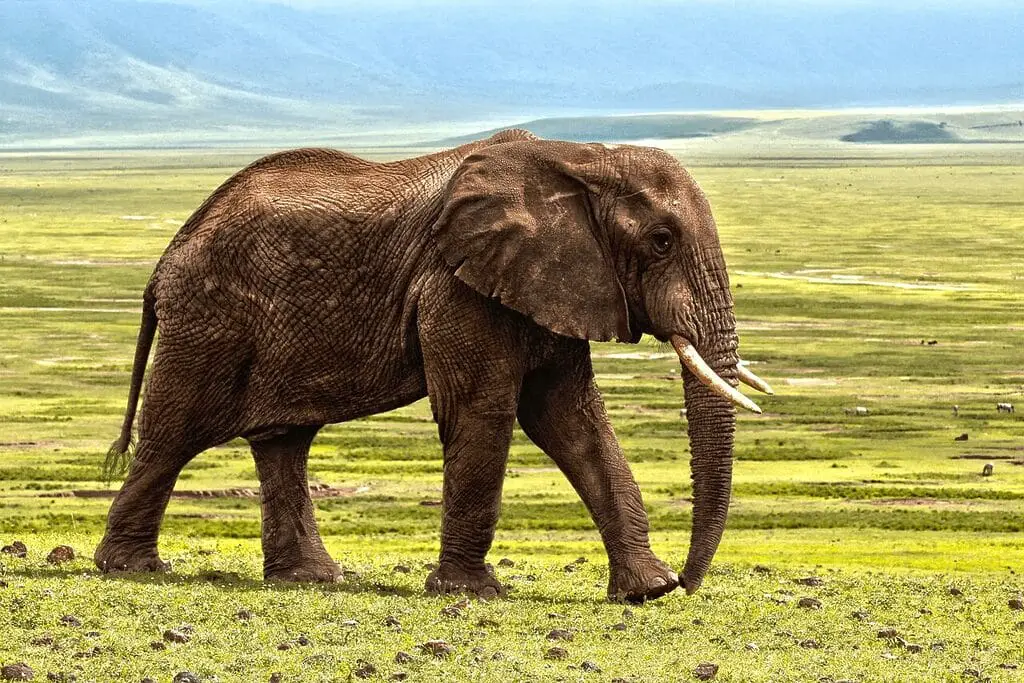
Types of Elephants in Africa
There are two species of elephants found in Africa: the African bush elephant and the African forest elephant. The African bush elephant is the larger of the two, with males weighing up to 13,000 pounds. They are found across sub-Saharan Africa, in countries such as South Africa, Tanzania, and Kenya.
The African forest elephant is smaller and inhabits the dense forests of Central and West Africa. Both species have complex social structures and play crucial roles in their ecosystems. The total population of African elephants is estimated at around 400,000 individuals, with a declining trend due to poaching and habitat loss.
Threats and Conservation Efforts
The main threats to elephants in Africa are poaching for ivory, habitat loss due to human expansion, and human-elephant conflict. Conservation efforts include anti-poaching measures, habitat protection, and community-based conservation initiatives. Organizations like the African Wildlife Foundation and the International Fund for Animal Welfare are working to protect elephants and their habitats.
Addax
Habitat and Behavior
The addax is a critically endangered antelope found in the Sahara Desert. They have unique adaptations to desert life, such as the ability to survive without drinking water for extended periods. Addax are known for their striking appearance, with long spiral horns and white coats. The current population is estimated at less than 500 individuals, with a highly fragmented distribution.
Threats and Conservation Efforts
The primary threats to addax are habitat loss due to desertification, hunting, and disturbance from oil exploration. Conservation efforts include the establishment of protected areas, captive breeding programs, and reintroduction efforts. The Sahara Conservation Fund and the International Union for Conservation of Nature (IUCN) are among the organizations working to save the addax.
African Wild Donkey
Habitat and Behavior
The African wild donkey is a critically endangered equid found in the Horn of Africa, primarily in Eritrea and Ethiopia. They are adapted to arid environments and have a unique social structure, with females forming stable groups and males being more solitary. The current population is estimated at less than 600 individuals, with a highly fragmented range.
Threats and Conservation Efforts
The main threats to African wild donkeys are habitat loss, hunting, and competition with livestock for resources. Conservation efforts focus on protected areas, research on their ecology and distribution, and community engagement. The IUCN and the African Wild Ass Conservation Project are working to protect this endangered species.
Golden Bamboo Lemur
Habitat and Behavior
The golden bamboo lemur is a critically endangered primate found only in a small area of Madagascar. They depend on bamboo forests and have unique adaptations for feeding on bamboo, which makes up the majority of their diet. The current population is estimated at around 1,000 individuals, with a highly restricted range.
Threats and Conservation Efforts
The primary threats to golden bamboo lemurs are habitat loss due to deforestation, hunting, and climate change. Conservation efforts include habitat protection, research on their ecology and behavior, and community engagement. The Madagascar Biodiversity Partnership and Conservation International are among the organizations working to save this unique primate.
Seychelles Sheath-tailed Bat
Habitat and Behavior
The Seychelles sheath-tailed bat is a critically endangered bat found only in the Seychelles islands. They roost in caves and forage in nearby forests. The current population is estimated at less than 100 individuals, with only a handful of known roosting sites.
Threats and Conservation Efforts
The main threats to Seychelles sheath-tailed bats are habitat loss, disturbance of roosting sites, and invasive species. Conservation efforts focus on habitat protection, research on their ecology and distribution, and invasive species control. The Seychelles government and the Island Conservation Society are working to protect this critically endangered bat.
Newton’s Fiscal
Habitat and Behavior
Newton’s fiscal is a critically endangered bird found only on the island of São Tomé. They inhabit the island’s forests and play a role in controlling insect populations. The current population is estimated at less than 250 individuals, with a range restricted to a small area of the island.
Threats and Conservation Efforts
The primary threats to Newton’s fiscals are habitat loss due to deforestation, invasive species, and predation by introduced mammals. Conservation efforts include habitat protection, invasive species control, and research on their ecology and behavior. BirdLife International and the São Tomé and Príncipe government are working to save this unique bird.
Bizarre-nosed Chameleon
Habitat and Behavior
The bizarre-nosed chameleon is a critically endangered chameleon found only in a small area of Madagascar. They have a unique appearance, with a distinctive protuberance on their snout. Bizarre-nosed chameleons have specialized adaptations for camouflage and prey capture. The current population is estimated at less than 250 individuals, with a highly restricted range.
Threats and Conservation Efforts
The main threats to bizarre-nosed chameleons are habitat loss due to deforestation, collection for the pet trade, and climate change. Conservation efforts focus on habitat protection, research on their ecology and distribution, and community engagement. The Madagascar Biodiversity Partnership and the IUCN are working to protect this unique chameleon.
Krokosua Squeaking Frog
Habitat and Behavior
The Krokosua squeaking frog is a critically endangered frog found only in a small area of Ghana. They depend on forest streams and are known for their unique vocalizations. The current population is estimated at less than 50 individuals, with a highly restricted range.
Threats and Conservation Efforts
The primary threats to Krokosua squeaking frogs are habitat loss due to deforestation, water pollution, and chytrid fungus. Conservation efforts include habitat protection, research on their ecology and distribution, and ex-situ conservation measures. The Wildlife Division of the Forestry Commission of Ghana and the IUCN are working to save this critically endangered frog.
Conservation Challenges and Successes
Protecting Africa’s endangered species is a complex and ongoing challenge, requiring the collaboration of governments, conservation organizations, local communities, and individuals around the world. While the threats facing these animals are significant, there are also many dedicated people working tirelessly to ensure their survival.
Key Conservation Challenges
Some of the main challenges in conserving Africa’s endangered species include:
- Habitat loss and fragmentation: As human populations expand and demand for land increases, many animals are losing the habitats they depend on. Deforestation, agricultural expansion, and urbanization are all major drivers of habitat loss.
- Poaching and illegal wildlife trade: The illegal trade in wildlife products, such as ivory, rhino horn, and pangolin scales, is a major threat to many species. Poachers target these animals for their valuable parts, which are sold on the black market.
- Human-wildlife conflict: As humans and animals increasingly come into contact, conflicts can arise. Animals may raid crops, attack livestock, or pose a threat to human safety, leading to retaliatory killings.
- Climate change: Changing weather patterns, rising temperatures, and more frequent droughts and floods can all have significant impacts on wildlife. Many species may struggle to adapt to these rapidly changing conditions.
- Limited resources for conservation: Protecting endangered species requires significant financial and human resources, which can be difficult to secure. Many conservation organizations rely on donations and grants to fund their work.
Conservation Successes
Despite these challenges, there have been many successful conservation efforts in Africa. Some notable examples include:
- Mountain gorilla conservation: Thanks to dedicated conservation efforts, mountain gorilla numbers have increased from around 480 individuals in 2010 to over 1,000 today. Strict protection measures, habitat restoration, and community engagement have all played a role in this success.
- Black rhino recovery: After decades of decline, black rhino numbers are slowly increasing in some areas. In South Africa’s Kruger National Park, for example, the black rhino population has grown from around 100 individuals in the 1970s to over 500 today.
- Lion conservation in East Africa: In some parts of East Africa, such as Kenya’s Maasai Mara National Reserve, lion populations have remained stable or even increased in recent years. This is thanks to effective protected area management, community-based conservation initiatives, and efforts to reduce human-lion conflict.
- Elephant protection in Botswana: Botswana is home to the largest elephant population in Africa, with over 130,000 individuals. The country has taken a strong stance against poaching, with armed anti-poaching units and strict penalties for wildlife crime.
- Captive breeding and reintroduction programs: For some critically endangered species, captive breeding and reintroduction programs have been successful in boosting wild populations. The scimitar-horned oryx, for example, was extinct in the wild but has now been reintroduced to Chad thanks to a captive breeding program.
The Role of Local Communities

One of the most important factors in successful conservation is the engagement and support of local communities. When communities benefit from conservation, through jobs, tourism revenue, or other incentives, they are more likely to support and participate in conservation efforts.
Community-based conservation initiatives, such as wildlife conservancies and eco-tourism projects, can provide a sustainable source of income for communities while also protecting wildlife. By giving communities a stake in conservation, these initiatives can help to reduce human-wildlife conflict and poaching.
Education and awareness-raising are also crucial in engaging local communities in conservation. By teaching people about the value of wildlife and the importance of protecting it, conservation organizations can help to build a culture of conservation and stewardship.
The Importance of International Cooperation
Protecting Africa’s endangered species requires international cooperation and support. Many of the threats facing these animals, such as poaching and illegal wildlife trade, are driven by demand from other parts of the world.
International agreements, such as the Convention on International Trade in Endangered Species (CITES), can help to regulate the trade in wildlife products and ensure that it is sustainable and legal. Governments, conservation organizations, and law enforcement agencies must work together across borders to combat wildlife crime and protect endangered species.
Collaboration between Africa and the international community can also help to secure the financial and technical resources needed for conservation. Donor countries and organizations can provide funding and expertise for conservation projects, while African governments can create the policies and frameworks needed to support conservation efforts.
The Future of Africa’s Endangered Species
The future of Africa’s endangered species is uncertain, but there is reason for hope. With dedicated conservation efforts, strong international cooperation, and the engagement of local communities, it is possible to protect and recover many of these incredible animals.
However, it will require sustained commitment and effort from all stakeholders. Governments must prioritize conservation in their policies and budgets, while conservation organizations and donors must continue to support and fund conservation projects.
Local communities must be empowered to participate in and benefit from conservation, while individuals around the world must make responsible choices as consumers and citizens.
Ultimately, the fate of Africa’s endangered species is in our hands. By working together and taking action, we can ensure that these amazing animals continue to thrive in the wild for generations to come.
Vulnerable and Near-Threatened Species
While not facing the same immediate risk of extinction as critically endangered and endangered species, vulnerable and near-threatened animals still require conservation attention to prevent their populations from declining further.
African Wild Dog
Habitat and Behavior
The African wild dog, also known as the African painted dog or African hunting dog, is a unique canid found in savanna and grassland habitats across sub-Saharan Africa. These social animals live in packs of up to 40 individuals, working together to hunt and raise their young. African wild dogs are known for their distinctive coat patterns, which are unique to each individual.
Threats and Conservation Efforts
The primary threats facing African wild dogs are habitat loss and fragmentation, conflict with humans, and disease. As human populations expand and encroach on wild dog habitats, the animals are forced into smaller and more isolated areas, making them more vulnerable to other threats.
Conflict with humans, particularly with livestock farmers, often leads to wild dogs being shot or poisoned. Diseases such as rabies and canine distemper can also decimate wild dog populations.
Conservation efforts for African wild dogs include protected area management, community outreach and education, and vaccination programs.
Organizations like the African Wildlife Conservation Fund work to establish and manage protected areas for wild dogs, while also engaging with local communities to reduce human-wildlife conflict. Vaccination programs aim to prevent the spread of diseases that can impact wild dog populations.
Giraffe
Types of Giraffes in Africa
There are four distinct species of giraffe found in Africa: the northern giraffe, southern giraffe, reticulated giraffe, and Masai giraffe. Each species has its own unique coat pattern and is found in different regions of the continent.
While giraffes are not currently considered endangered, their populations have declined by around 40% in the last 30 years, leading to them being classified as vulnerable.
Threats and Conservation Efforts
The main threats facing giraffes in Africa are habitat loss and fragmentation, poaching, and climate change. As human populations expand and develop land for agriculture and infrastructure, giraffe habitats are becoming increasingly fragmented and isolated.
Poaching for meat and body parts is also a significant threat, particularly in regions affected by conflict and instability. Climate change is altering the distribution and availability of the vegetation that giraffes depend on for food.
Conservation efforts for giraffes include habitat protection and restoration, anti-poaching measures, and research and monitoring. Organizations like the Giraffe Conservation Foundation work to protect and restore giraffe habitats, while also supporting anti-poaching efforts and conducting research to better understand giraffe ecology and behavior.
Community-based conservation initiatives, such as eco-tourism and sustainable land management, can also help to protect giraffe populations while providing benefits to local communities.
Cheetah
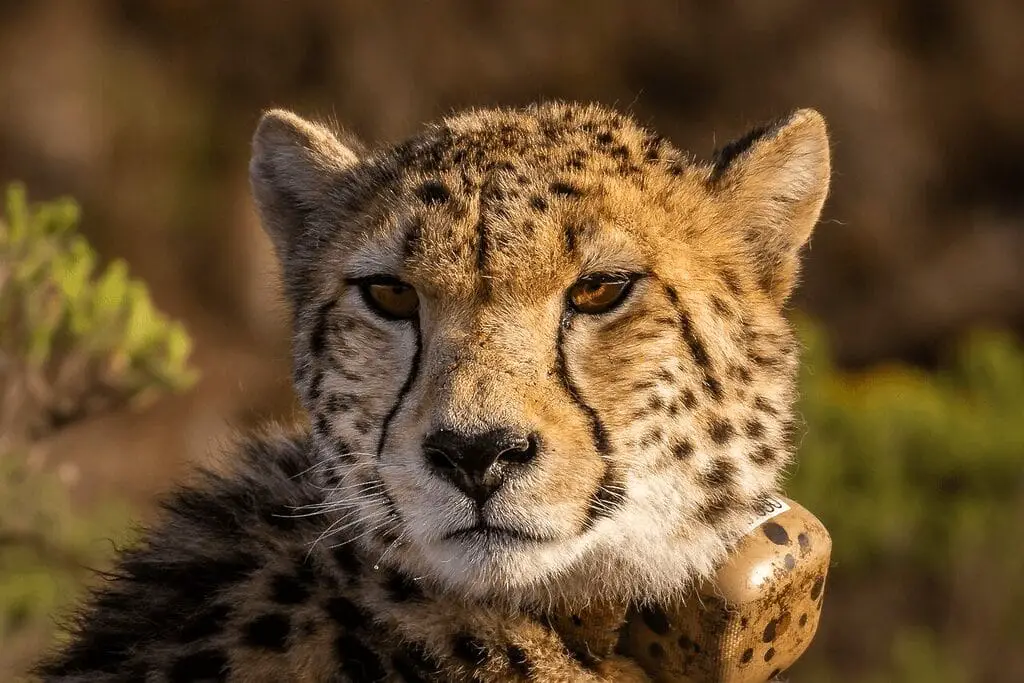
Habitat and Behavior
The cheetah is a unique and iconic big cat found in grassland and savanna habitats across Africa. Known for their incredible speed and agility, cheetahs are specialized hunters that rely on their keen eyesight and explosive acceleration to catch prey. Unlike other big cats, cheetahs are primarily diurnal, meaning they are active during the day.
Threats and Conservation Efforts
The primary threats facing cheetahs are habitat loss and fragmentation, conflict with humans, and competition with other predators. As cheetah habitats are converted for agriculture and development, the cats are forced into smaller and more isolated areas, making them more vulnerable to other threats. Conflict with humans, particularly with livestock farmers, can lead to cheetahs being shot or trapped. Competition with larger predators, such as lions and hyenas, can also limit cheetah populations.
Conservation efforts for cheetahs include protected area management, community outreach and education, and research and monitoring. Organizations like the Cheetah Conservation Fund work to establish and manage protected areas for cheetahs, while also engaging with local communities to reduce human-wildlife conflict and promote sustainable land management practices. Research and monitoring programs help to track cheetah populations and identify key areas for conservation action.
African Penguin
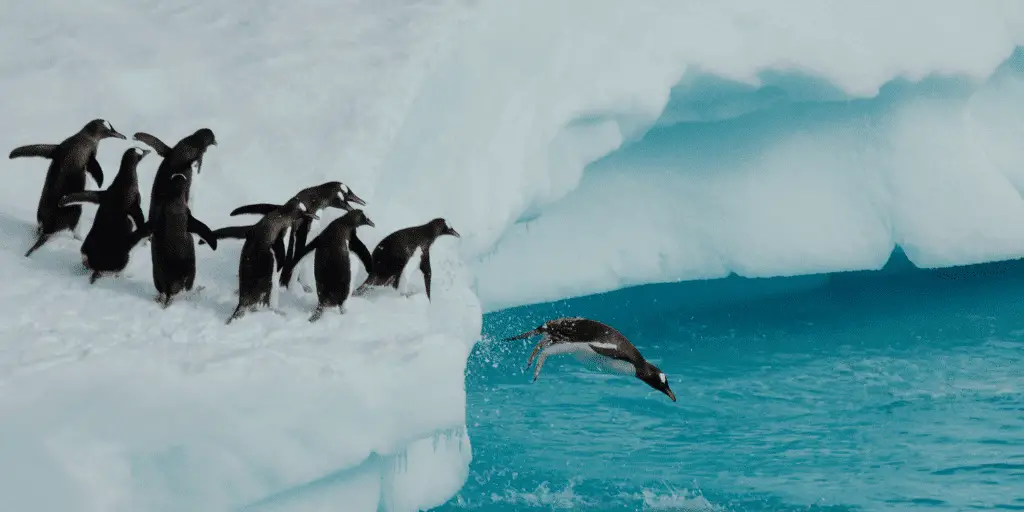
Habitat and Behavior
The African penguin, also known as the black-footed penguin, is a unique seabird found along the coast of southern Africa, primarily in South Africa and Namibia. These flightless birds are adapted to a life at sea, using their wings to “fly” through the water in pursuit of fish. African penguins are colonial nesters, forming large breeding colonies on islands and rocky coastlines.
Threats and Conservation Efforts
The main threats facing African penguins are overfishing, habitat degradation, oil spills, and climate change. As the fish stocks that penguins depend on for food are depleted by commercial fishing, the birds are struggling to find enough to eat.
Habitat degradation, particularly the removal of guano (accumulated bird droppings) for fertilizer, has reduced the availability of suitable nesting sites. Oil spills can have devastating impacts on penguin populations, coating their feathers and making it impossible for them to swim and hunt. Climate change is altering the distribution and abundance of the fish that penguins rely on for food.
Conservation efforts for African penguins include fishery management, habitat protection and restoration, oil spill response and rehabilitation, and research and monitoring. Organizations like SANCCOB (Southern African Foundation for the Conservation of Coastal Birds) work to rescue and rehabilitate penguins affected by oil spills and other threats, while also supporting research and monitoring programs to better understand penguin ecology and behavior.
Fishery management and marine protected areas can help to ensure that there is enough food available for penguins and other seabirds. Habitat protection and restoration, such as the creation of artificial nesting sites, can help to provide suitable breeding areas for penguin colonies.
Grévy’s Zebra
Habitat and Behavior
Grévy’s zebra is a large, distinctive equid found in the semi-arid grasslands and savannas of Kenya and Ethiopia. These zebras are known for their unique stripe patterns, which are narrower and more numerous than those of other zebra species. Grévy’s zebras are social animals, forming small herds of females and their offspring, with males defending territories.
Threats and Conservation Efforts
The primary threats facing Grévy’s zebras are habitat loss and degradation, competition with livestock, and poaching. As the grasslands and savannas that Grévy’s zebras depend on are converted for agriculture and development, the animals are losing the habitat they need to survive. Competition with livestock for water and grazing resources is also a significant threat, as is poaching for meat and skins.
Conservation efforts for Grévy’s zebras include protected area management, community outreach and education, and research and monitoring. Organizations like the Grévy’s Zebra Trust work to establish and manage protected areas for zebras, while also engaging with local communities to promote sustainable land management practices and reduce competition with livestock.
Research and monitoring programs help to track zebra populations and identify key areas for conservation action. Community-based conservation initiatives, such as eco-tourism and livestock management, can also help to protect zebra populations while providing benefits to local communities.
By highlighting the unique characteristics, threats, and conservation efforts associated with these vulnerable and near-threatened species, we can raise awareness about the importance of protecting Africa’s diverse and fascinating wildlife.
Through a combination of protected area management, community engagement, research, and monitoring, we can work towards a future where these species can thrive in their natural habitats.
Frequently Asked Questions
How can I help support conservation efforts for endangered animals in Africa?
You can support conservation efforts by donating to reputable wildlife organizations, spreading awareness about endangered species, and making eco-friendly choices in your daily life.
Are there any success stories of endangered animals recovering in Africa?
Yes, mountain gorilla populations have increased thanks to dedicated conservation efforts, and black rhino numbers are slowly rising in some areas due to effective protection measures.
What role do local communities play in protecting endangered species in Africa?
Local communities are crucial in conservation efforts. When communities benefit from conservation through jobs, tourism, or other incentives, they are more likely to support and participate in protecting wildlife.
How does international cooperation help in conserving Africa’s endangered animals?
International cooperation is vital in regulating wildlife trade, combating poaching, and providing financial and technical resources for conservation projects in Africa.
What can individuals do to contribute to the conservation of vulnerable and near-threatened species in Africa?
Individuals can contribute by supporting organizations working to protect these species, making responsible consumer choices, and raising awareness about the importance of conservation.
- Wild Animals in Costa Rica: A Biodiverse Paradise - 2024-05-16
- Animals That Live in the Rainforest: A Diverse Wonder - 2024-05-15
- Animals in the Safari: A Captivating African Adventure - 2024-05-15

